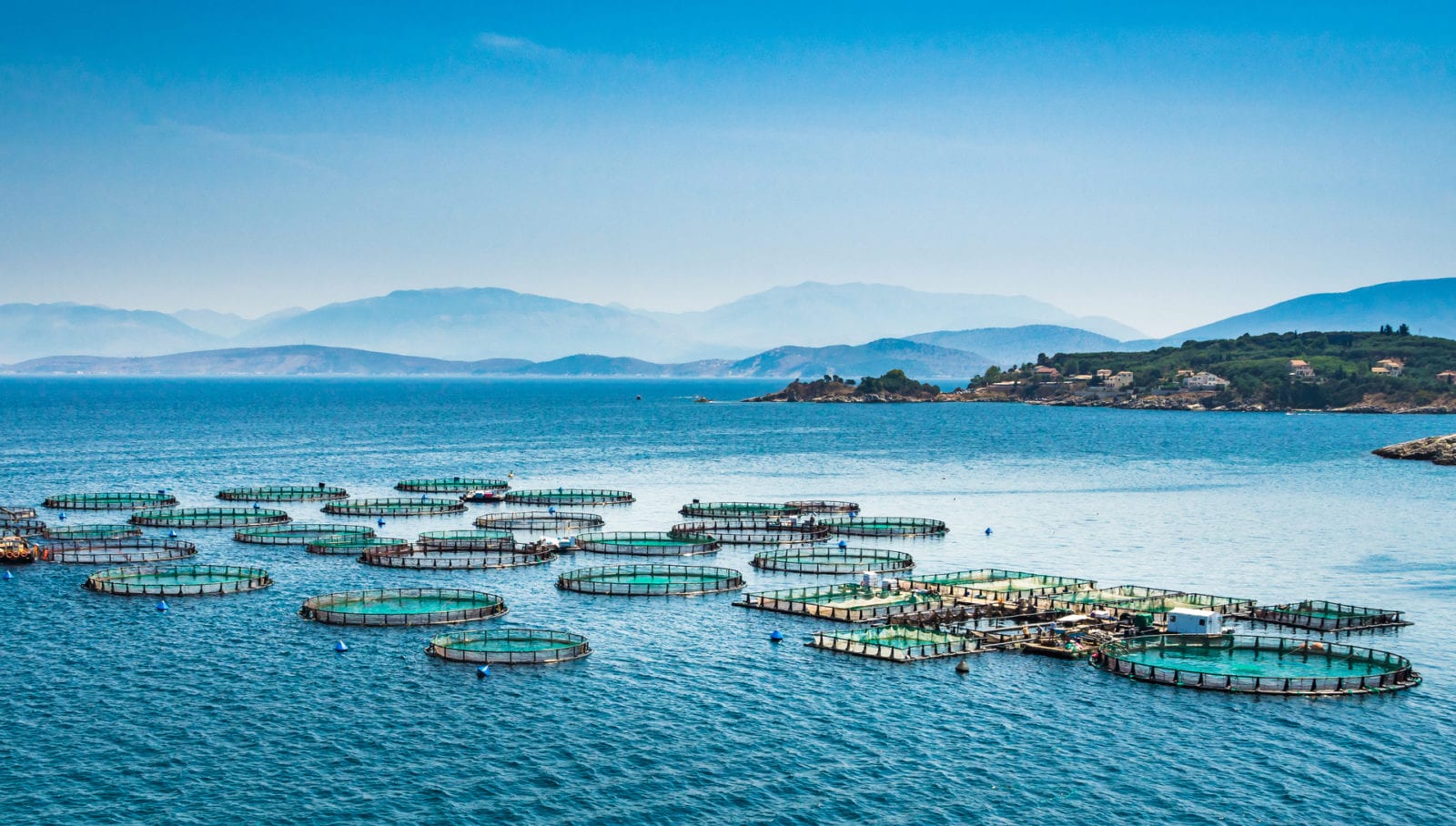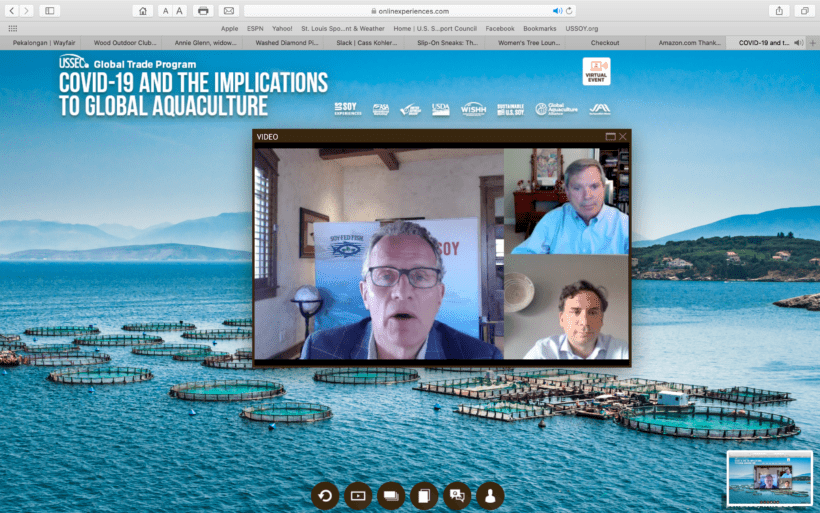800+ Participants Take Part in USSEC’s Global Aquaculture Virtual Conference
- Category:
- Aquaculture
- General News

USSEC is continuing to maintain relationships with key audiences around the globe through the use of technology and virtual events during the COVID-19 pandemic.
On May 20, 884 individuals participated in COVID-19 and the Implications to Global Aquaculture, virtually presented by USSEC. The conference was presented in two sessions, one in the morning and another in the evening, to accommodate global time zones. Participants included representatives from different governments and the feed industry, along with aquaculture producers.
USSEC CEO Jim Sutter welcomed attendees, explaining the importance of innovation and adaptability in the aqua industry. U.S. Soy has had an active aquaculture program for 35 years, Sutter says, working with customers ranging from small family fish farms to large corporations demonstrating that U.S. soy products are a key component of better aquafeed. He listed four priorities for the aquaculture industry: feed, technical advances, aquaculture investments, and sustainability.
Monte Peterson, USSEC chairman and a director for the American Soybean Association (ASA), also welcomed participants, reinforcing the commitment of U.S. soy farmers to producing high quality soybeans for food, fuel, and fiber safely and effectively. “The value of our partnership is immeasurable,” Peterson states.
George Chamberlain, president of the Global Aquaculture Alliance (GAA), gave a presentation, “Impact of COVID-19 on Aquaculture,” which touched on global impacts and controls, prognosis, impacts on seafood sector, worker safety, and production impacts. While COVID does not impact seafood, Chamberlain says, the impacts are indirect, affecting market channels.

Gorjan Nikolik of Rabobank presented “Salmon and Shrimp Aquaculture: Industry Update.” He said the biggest impact on salmon aquaculture is price correction, as the fish already had a tight supply outlook, which the pandemic has only served to further tighten. Shrimp has also been affected by COVID; supply is recovering, Nikolik says, but demand has not yet recovered.

USSEC Senior Director – Soybean Meal Carlos Salinas told attendees that COVID-19 will have “foreseeable and unforeseeable consequences,” but that the aquaculture supply chain is more complex than most. Sustainability will remain a key element for both buyers and sellers and individuals cannot have a short-sighted vision on sustainability. Sustainability, he reiterates, is here to stay, as both a mainstream and a corporate responsibility. The U.S. Soy Sustainability Assurance Protocol (SSAP) is an important component as platform certification and certification criteria will continue to become more stringent.

A Q & A session followed the presentations and addressed a spectrum of questions ranging from changes in consumer behavior, fish production, investment potential, inspection/certification programs, and the impact of the pandemic on various sub-industries.

All of USSEC’s global regions were represented by attendees from every region with the highest participation coming from Southeast Asia and the Americas. The U.S., Mexico, Philippines, China, Thailand, India, Indonesia, and Ecuador were the countries with the greatest number of participants.
42% of participants agreed or strongly agreed that they prefer to purchase SSAP – certified sustainable U.S. Soy.
For stakeholders who were unable to attend the event, please click here for a link to the morning session or here for the evening session.